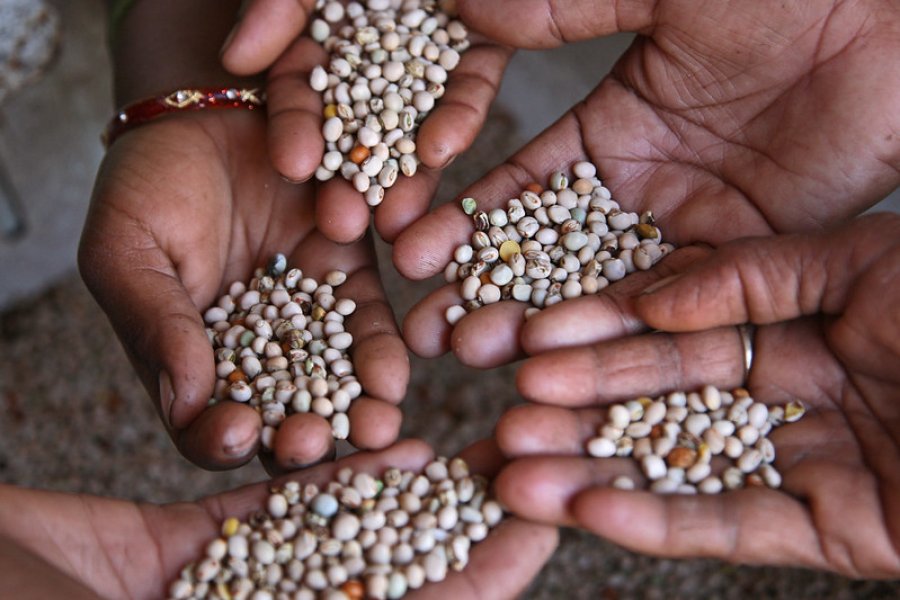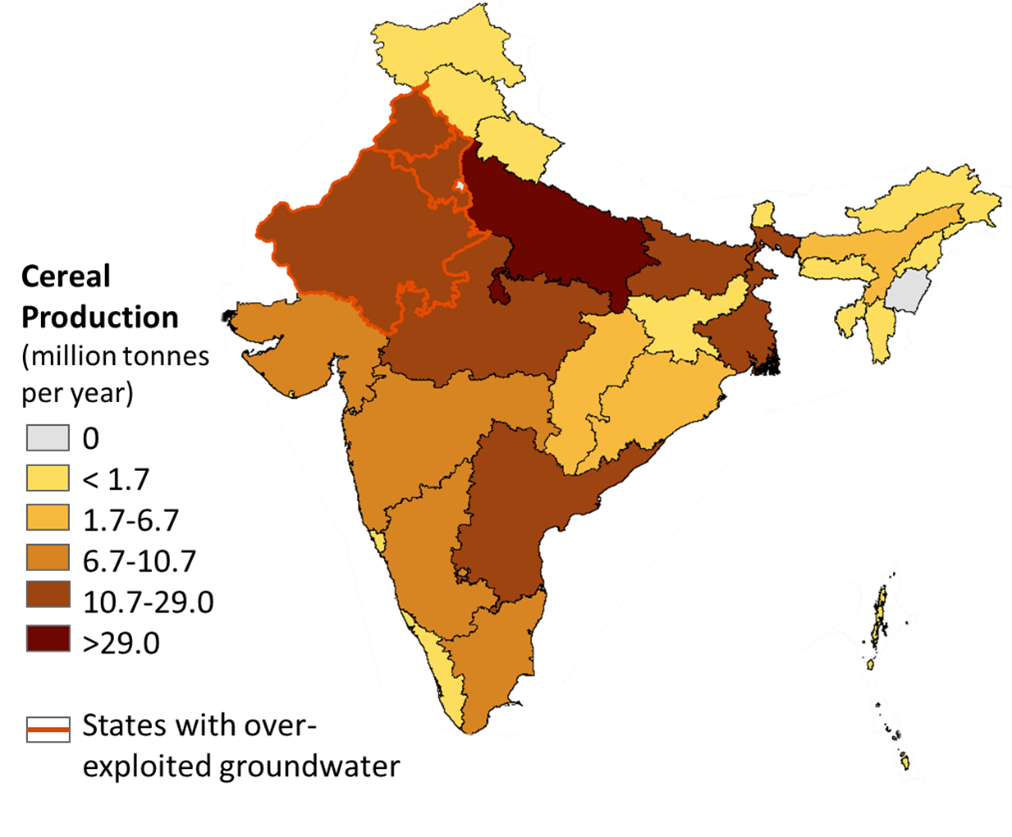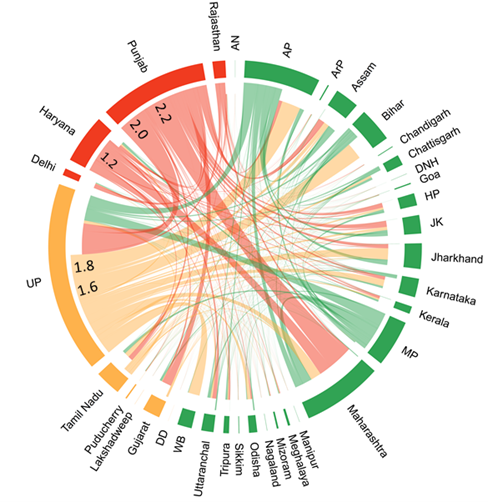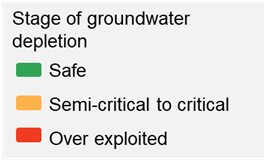
The global demand for food is increasing as the world’s population grows and people have more money to spend on a diverse supply of food. Farmers are trying to keep pace with this growing demand, but in some parts of the world this is increasingly putting at risk the ecosystems on which they depend. One major environmental factor is access to water, and in some parts of the world much of the water used in agriculture comes from underground reserves. Due to increased pumping of this water for irrigation, these reserves are often being depleted faster than they can be replenished.
In India, the depletion of groundwater reserves is a major concern that, if allowed to continue, may result in failed harvests and disrupted food supplies. One of the main uses of groundwater in Indian agriculture is the production of cereals like rice and wheat. Nearly half (48%) of Indian cereal production takes place in the North of the country and this cereal is then traded within India between States.
Figure: State-level annual cereal production for the study year (2011-12). States with over-exploited groundwater reserves are outlined in red. Data from the Ministry of Agriculture and Farmers Welfare, Govt of India.
What’s never been estimated is how this cereal is traded, and how much water is traded with it – this is the water used for the production of the cereals – so called “embedded” or “virtual” water. This information is important to know as it links cereal production, cereal consumption and water use in India and allows us to understand the resilience of the Indian food system to potential future water shortages.
Our new analysis has for the first time estimated the interstate trade of cereals in India and we have calculated how much embedded water was traded with the cereals. The Indian government collects large amounts of data on cereal production and consumption and we used these publicly available data for our calculations.
Our study estimated that every year an astonishing 94 million tonnes of cereal and 153 km3 of embedded water moves between Indian states. Much of the cereal and embedded water comes from the Northern region that suffers from significant levels of groundwater stress. In fact we estimate that 71% of the embedded groundwater traded with cereals comes from States with over-exploited or critically depleting groundwater reserves (as defined by the Central Groundwater Board, Government of India).
Our analysis identifies that groundwater depletion is not just going to be a problem for States with overexploited groundwater resources, but also a problem for States that depend on these resources for their cereals: 31 out of the 35 States in India consume some cereals that have been produced in States with overexploited groundwater – that equates to 76% of the Indian population.
Figure - Interstate trade of groundwater in India, according to groundwater status of the exporting state (km3/year). Chord colours represent state of groundwater depletion. Chords are indented for the importing state. Adapted from Harris et al., 2020.
So, what is the solution? Increasing agricultural production in water abundant regions such as the Eastern states and then trading those crops to other states could be an intervention to help distribute water resources. Subsidies could be provided in regions with abundant water supply to increase production. Additionally, the majority of cereals consumed and traded are rice and wheat, so shifting production away from rice and wheat towards less water demanding cereals, such as millets and sorghum, could also reduce the dependency of Indian agriculture on stressed groundwater resources. Further research is needed to understand how to implement these solutions in an equitable manner.
Nevertheless, this study has helped illustrate how our food consumption has an impact on the environment. An understanding of food trade is ever more important in our complex food system, particularly as unsustainable resource use and environmental degradation continues. Without it we are blind to where future food security risks might be.
This piece was written by Francesca Harris, with support from Amy Thomas, Alan Dangour and Rosemary Green.
Our postgraduate taught courses provide health practitioners, clinicians, policy-makers, scientists and recent graduates with a world-class qualification in public and global health.
If you are coming to LSHTM to study a distance learning programme (PG Cert, PG Dip, MSc or individual modules) starting in 2024, you may be eligible for a 5% discount on your tuition fees.
These fee reduction schemes are available for a limited time only.



